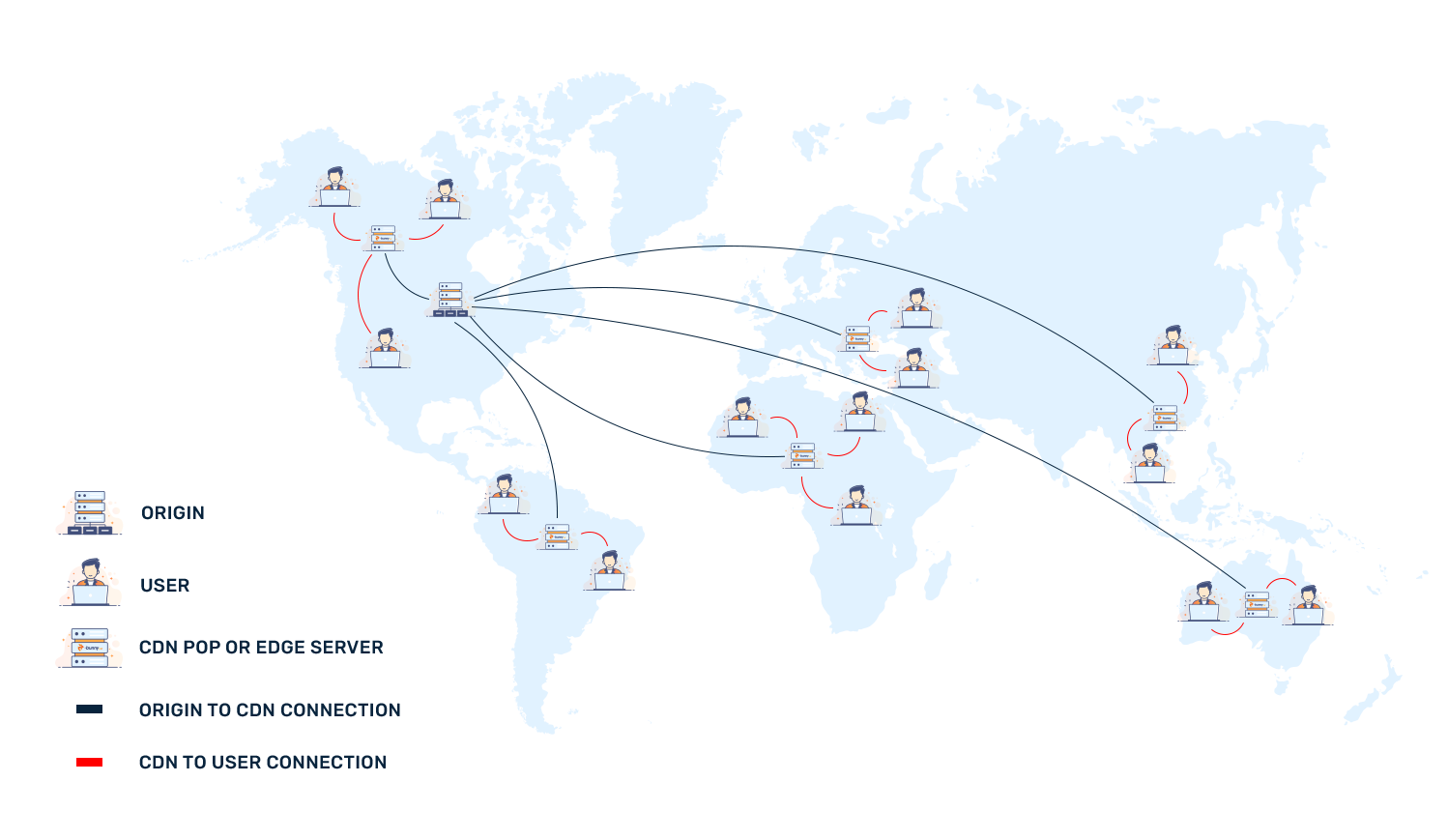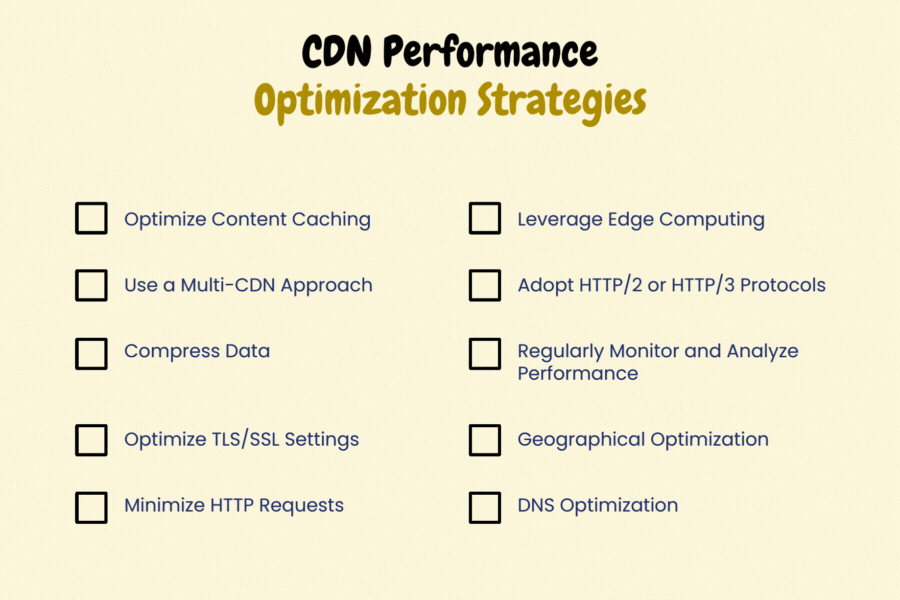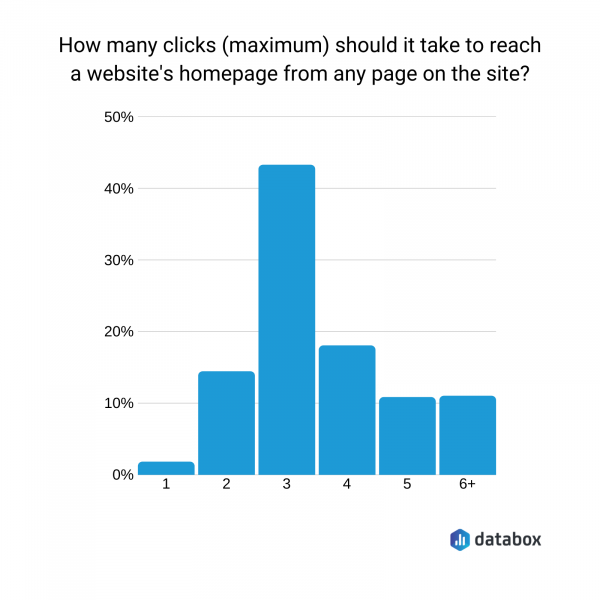
In today’s fast-paced digital landscape, website performance is more critical than ever. Users expect content to load instantly, regardless of their location. This is where CDN utilization comes into play. A Content Delivery Network (CDN) is a powerful tool that helps websites deliver content faster and more efficiently by leveraging a network of global servers. In this article, we’ll explore what CDN utilization is, why it matters, and how it can significantly improve your website’s performance.
What Is CDN Utilization and Why It Matters
CDN utilization refers to the practice of using a Content Delivery Network to distribute content across a global network of servers. The goal is to reduce latency—essentially, the time it takes for data to travel from the server to the user’s device. By strategically placing servers in multiple geographic locations, CDNs ensure that users receive content from the closest possible server, minimizing delays and improving the overall user experience.
This is particularly important for websites with a global audience. Without a CDN, all traffic would have to route through a single origin server, which could be located far from the user. This results in slower load times, higher bounce rates, and a poor user experience. With CDN utilization, however, content is cached on edge servers closer to the end user, reducing the distance data needs to travel and accelerating delivery.
Moreover, CDNs are not just about speed. They also help reduce bandwidth costs, increase content availability, and improve website security by mitigating DDoS attacks. These benefits make CDN utilization an essential component of modern web infrastructure.
How CDN Utilization Impacts SEO Performance
Search engines like Google prioritize page speed as a ranking factor. Websites that load quickly are more likely to rank higher in search results, leading to increased visibility and organic traffic. CDN utilization directly contributes to faster page load times, which in turn improves SEO performance.
Additionally, CDN utilization enhances user engagement metrics such as dwell time and bounce rate. When users experience fast load times, they are more likely to stay on your site, interact with your content, and convert. This positive user behavior signals to search engines that your site is valuable, further boosting your rankings.
Another key benefit of CDN utilization is its impact on Core Web Vitals. These are a set of metrics that measure a website’s loading performance, interactivity, and visual stability. CDNs help improve these metrics by reducing latency and ensuring content is delivered efficiently, making them an invaluable asset for SEO success.
Step-by-Step Implementation Framework
Implementing CDN utilization effectively requires a structured approach. Here’s a step-by-step guide to help you get started:
-
Define or Audit the Current Situation
Begin by analyzing your current website performance. Use tools like Google PageSpeed Insights or Lighthouse to identify bottlenecks. Determine whether your site is already using a CDN and assess its effectiveness. -
Apply Tools, Methods, or Tactics
Choose a CDN provider that aligns with your needs. Popular options include Cloudflare, Akamai, and Amazon CloudFront. Configure your CDN to cache static assets, enable compression, and optimize routing. Ensure that your CDN is set up to handle dynamic content if needed. -
Measure, Analyze, and Optimize
Monitor your CDN performance using tools like Pingdom, WebPageTest, or real-user monitoring (RUM) solutions. Track metrics such as RTT (Round-Trip Time) and TTFB (Time to First Byte). Use A/B testing to compare different configurations and identify the most effective setup. Regularly review your CDN logs and adjust settings as needed to maintain optimal performance.
By following this framework, you can ensure that your CDN is working efficiently and delivering the best possible user experience.
Real or Hypothetical Case Study
Let’s look at a hypothetical case study to illustrate the impact of CDN utilization. Imagine a global e-commerce platform that experiences slow load times for users in Asia. After implementing a CDN, the site’s average load time drops from 5 seconds to 1.5 seconds. As a result, the bounce rate decreases by 40%, and conversion rates increase by 25%. Additionally, the site sees a 30% improvement in Core Web Vitals scores, leading to better search engine rankings.
This example highlights how CDN utilization can transform a website’s performance and drive measurable business outcomes.
Tools and Techniques for CDN Utilization
To maximize the benefits of CDN utilization, consider using the following tools and techniques:
- Cloudflare: Offers a free CDN with advanced security features and easy integration.
- Akamai: A premium CDN known for its enterprise-grade performance and reliability.
- Amazon CloudFront: Integrates seamlessly with AWS services and provides scalable global distribution.
- SurferSEO: Helps analyze and optimize content for better SEO performance when combined with a CDN.
- Google PageSpeed Insights: Provides recommendations for improving page speed, including CDN usage.
- WebPageTest: Allows you to test your website’s performance from different locations around the world.
These tools can help you monitor, optimize, and manage your CDN effectively, ensuring that your content is delivered as quickly and efficiently as possible.
Future Trends and AI Implications
As technology continues to evolve, the role of CDNs will become even more critical. With the rise of AI-driven search and multimodal content, CDNs must adapt to handle new types of data, such as video, audio, and interactive elements. AI-powered CDNs will likely emerge, offering intelligent routing, predictive caching, and real-time optimization based on user behavior and network conditions.
Additionally, the growing importance of voice search and mobile-first indexing means that CDNs will need to support faster, more efficient content delivery across a wide range of devices. As a result, businesses must stay ahead of these trends by investing in robust CDN solutions that can scale with their needs.
Key Takeaways
- CDN utilization is essential for reducing latency and improving website performance.
- CDNs help speed up page load times, reduce bandwidth costs, and enhance security.
- Proper implementation of a CDN can lead to higher SEO rankings, better user engagement, and increased conversions.
- Monitoring and optimizing your CDN regularly ensures that it continues to deliver optimal performance.
- As AI and multimodal content become more prevalent, CDNs will need to evolve to meet new demands.
By embracing CDN utilization, you can future-proof your website and provide a seamless experience for users around the world.
Meta Title: Understanding CDN Utilization: How Global Servers Reduce Latency and Improve Performance
Meta Description: Learn how CDN utilization reduces latency, improves performance, and boosts SEO. Discover the benefits and best practices for implementing a CDN.
SEO Tags (5): CDN utilization, content delivery network, latency reduction, website performance, SEO optimization
Internal Link Suggestions: [Parameter #58: CDN Utilization], [Parameter #65: Mobile Responsiveness], [Parameter #97: Voice Search Optimization]
External Source Suggestions: https://www.cloudflare.com/, https://www.akamai.com/, https://aws.amazon.com/cloudfront/







